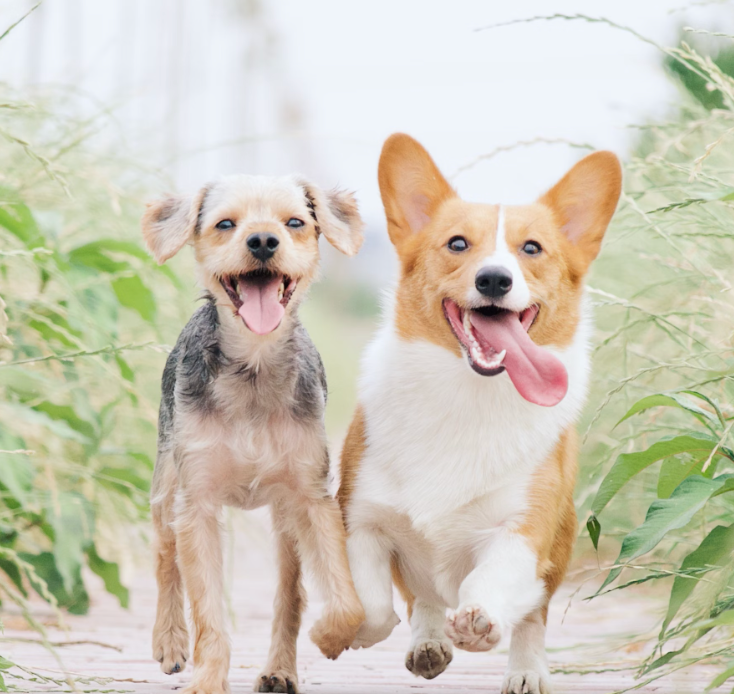Training your dog to perform specific tasks is not only a fun bonding activity, but it can also enhance your dog’s well-being and improve its quality of life. Whether you want to train your dog to fetch your slippers or assist with more complex tasks like helping with daily living, the process is rooted in patience, consistency, and positive reinforcement.
Here’s a guide on how to train your dog to perform tasks! 🐶

Step 1: Establish a Strong Foundation with Basic Commands
Before moving to specialized tasks, it’s essential that your dog masters the basic obedience commands. These are the building blocks for any advanced training.
- Sit: Use a treat to guide your dog’s nose upward, forcing their hind to naturally lower into a sitting position. Praise and reward immediately.
- Stay: Have your dog sit, then hold your hand out in front of their face as you say “stay.” Step back, and if they don’t move, reward them.
- Come: Use a long leash and say "come" in an excited voice. If your dog runs to you, reward them with a treat or toy.
Mastering these commands will create a foundation of discipline and attention, which is crucial for more complex tasks.
Step 2: Use Positive Reinforcement Techniques
Dogs respond best to positive reinforcement—rewarding good behavior rather than punishing bad behavior. This method helps create a positive association with the task you're trying to teach.
- Treats: Use small, soft treats that are easy to chew.
- Praise: Verbal rewards, like “Good job!” in a happy tone, can be equally effective.
- Clicker Training: A clicker helps mark the moment your dog performs the correct action. Pair the click with a reward, and your dog will quickly understand the desired behavior.
Consistency is key. Reward your dog every time they perform the task correctly, gradually phasing out treats as the task becomes routine.

Step 3: Break Tasks into Small, Achievable Steps
Complex tasks like fetching the remote or opening a door should be broken down into smaller steps. Dogs learn best when each step builds upon the last.
For example, if you want your dog to retrieve an item, follow these steps:
- Teach “Touch”: Start by training your dog to touch the item with their nose or paw. Use a cue like “touch” and reward them when they make contact.
- Teach “Hold”: Once they’re comfortable with touching, progress to holding the item in their mouth. Say “hold” and offer a treat when they do.
- Teach “Bring”: After mastering the hold, encourage them to bring the item to you. Use the command “bring,” and reward them when they bring it back.
Repeat each stage until your dog is confident, then string them together to complete the full task.
Step 4: Train for Specialized Tasks
If your goal is to teach your dog to assist with specific tasks like service dogs do, you can target more advanced behaviors. Whether your dog is learning to be a service animal or just a helper around the house, these specialized tasks will require patience and consistent practice.
-
Retrieving Items: After teaching “fetch,” apply it to specific tasks like retrieving your phone or medication bottle. Use distinct commands for each item, such as “phone” or “meds.”
-
Opening Doors: Attach a rope or cloth to a low handle, and teach your dog to pull it. Start with the “touch” command, followed by “pull.” Reward them for pulling the handle down and opening the door.
-
Assisting with Mobility: Train your dog to stand still while you use them for balance by reinforcing the "stay" command in different environments and while applying slight pressure.
Step 5: Be Patient and Stay Consistent
Dogs learn at their own pace, and each dog’s progress will vary. Stay patient, and keep sessions short and fun, ideally 10-15 minutes long, to prevent frustration. Consistent training will help solidify the tasks, but remember to give your dog regular breaks to relax and reset.
Step 6: Practice in Different Environments
Once your dog has learned the task at home, practice in new environments with varying distractions. This helps them understand that the command applies regardless of location or what’s going on around them.
For example, after your dog masters retrieving objects at home, practice in your backyard or a park. The goal is for them to perform consistently, even in busier settings.
Final Thoughts
Training your dog to perform tasks can be an incredibly rewarding experience. Whether it’s for fun, to assist with daily living, or to create a more service-oriented relationship, the key is patience, positive reinforcement, and consistency. Your dog will not only become a more helpful companion but also grow in confidence, trust, and love through the training process.
Happy training!


Share:
How to Train Your Dog to Sit: A Simple Guide for Every Dog Owner
How to Potty Train Your Dog: A Complete Step-by-Step Guide